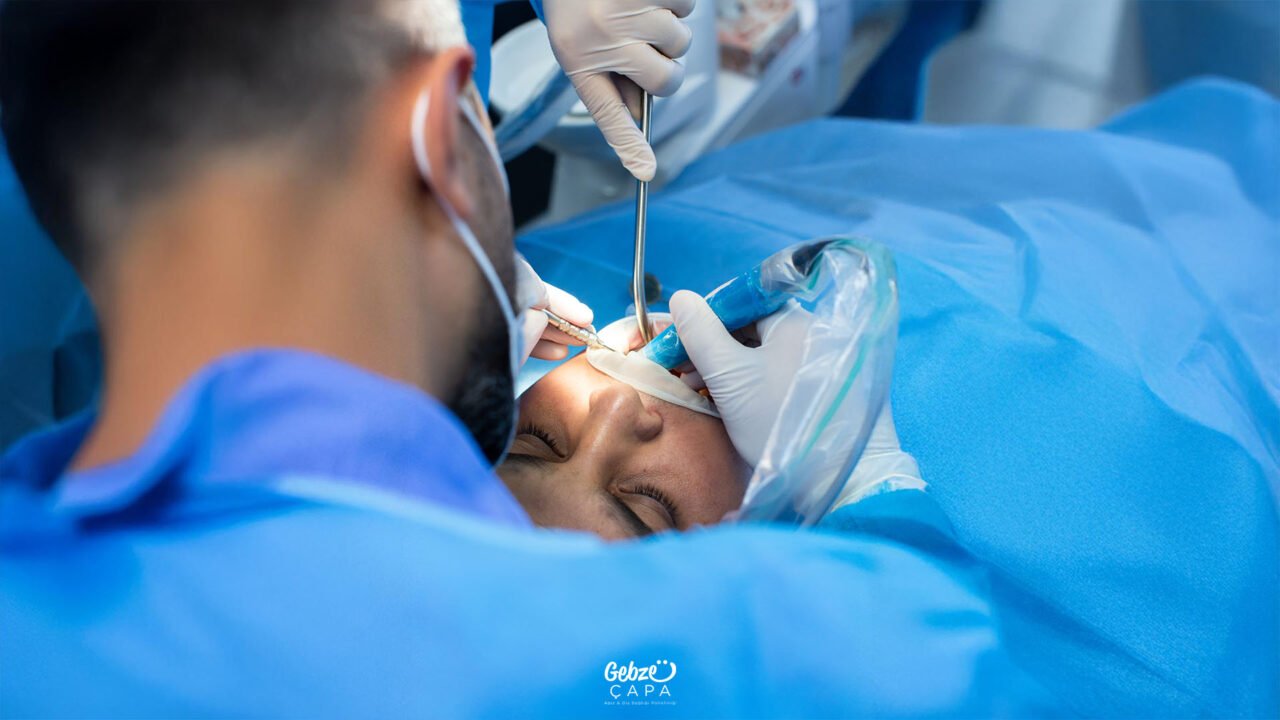Dental Treatment with Sedation
Dental treatment can be a source of stress and fear for many people. Especially fear of needles, sensitive teeth or long dental treatment processes cause many people to avoid going to the dentist. However, these fears can have serious consequences, such as neglecting oral and dental health. Fortunately, thanks to modern medical technologies, it is now possible to overcome these fears.
The sedation method stands out as a practice that facilitates the treatment process by making patients feel comfortable and safe during dental treatment. Sedation offers both physical and psychological relief, especially for those with dental chair phobia, individuals with sensitive teeth, or long-lasting, comprehensive procedures.
What is Sedation?
Sedation is a method of anesthesia used to calm and relax the patient. Sedation applied in dental treatments generally allows the patient to relax and reduce their anxiety during the treatment, without completely losing consciousness. The patient may be conscious during sedation, but feels quite comfortable during the procedure. This method is very effective for individuals who have a fear of dentists. It also minimizes stress and anxiety during treatment.
We can apply sedation at different levels;
- Light Sedation: The patient is awake but quite relaxed.
- Moderate Sedation (Conscious Sedation): The patient can talk during the procedure but does not remember most details.
- Deep Sedation: The patient is almost unconscious but can be aroused if necessary.

How Do We Apply Sedayon?
Sedation methods may vary depending on the patient’s needs and the characteristics of the treatment process to make dental treatment more comfortable. These methods aim to reduce the patient’s anxiety, relax their muscles, and provide a comfortable experience during the treatment. One of the most commonly used types of sedation is inhaled sedation, commonly known as the “laughing gas” method. In this method, nitrous oxide gas is inhaled through a mask and the patient feels relieved in a short time.
It is frequently preferred, especially for minor dental procedures and pediatric patients. Another method, oral sedation, is applied with sedative medications given to the patient before the procedure. With the effect of the drug, the patient relaxes, leaving his worries behind to a large extent, which provides convenience even in longer procedures. In cases that require more advanced relief, intravenous (IV) sedation comes into play. Intravenous medications provide the patient with a deep sense of calm and are ideal for complex procedures.
In some cases, general anesthesia is preferred. In this method, the patient is completely anesthetized and does not feel anything during the procedure. It offers an effective solution especially for young children, disabled individuals or patients experiencing extreme fear.
In Which Situations Is Sedation Preferred?
It can be preferred to facilitate dental treatments in many different situations. We commonly use sedation in these situations;
- Fear of the Dentist (Dental Phobia): Sedation provides great comfort for individuals who avoid going to treatment due to fear of the dentist.
- Intense Sensitivity: Patients with extreme sensitivity of teeth or gums feel less discomfort thanks to sedation.
- Long-Term Procedures: In cases where more than one treatment procedure is performed simultaneously, sedation ensures that the patient remains comfortable.
- Vomiting Reflex: This reflex can be controlled with sedation in patients who are sensitive to activities inside the mouth.
- Pediatric Patients: Sedation methods are very useful, especially for children who are afraid of dental treatment or cannot cooperate.

Advantages of Dental Treatment with Sedation?
Sedation offers many advantages that make dental treatments easier and more comfortable for both the patient and the dentist. First, it significantly reduces patients’ fear and stress levels, making the treatment process a more comfortable experience. Sitting in the dentist’s chair can be anxiety-provoking for many people, but thanks to sedation, the process turns into a calming experience for the patient. Additionally, sedation minimizes the perception of pain and provides an almost completely painless treatment process. This makes a big difference in both short and long-term procedures.
Having the patient sit comfortably and steadily allows the dentist to perform procedures more quickly and efficiently. Especially in complex or long-lasting treatments, the movement control provided by sedation makes the process easier for both the patient and the dentist. In addition, sedation prevents patients from remembering the negative experiences they had during treatment, which prevents bad memories that may arise from dental treatment. All these advantages make sedation an ideal solution, especially for people who avoid dental treatment due to fear or sensitivity.
Are There Risks of Dental Treatment with Sedation?
As with any medical intervention, sedation may of course have some risks and side effects. However, when applied by experienced and expert people, these risks are minimized. Possible side effects of sedation may include:
- Mild dizziness
- Nausea or vomiting
- Dry mouth
- Memory loss (especially in moderate and deep sedation)
A detailed health history evaluation must be performed to determine whether the patient is suitable for sedation.

What Should Be Considered During Dental Treatment with Sedation?
If you are considering dental treatment with sedation, you should pay attention to the following points:
- Choose an Experienced Physician: Sedation is a procedure that requires special training and experience. Therefore, you should make sure that you choose a dentist who is an expert in his field.
- Share Your Health History: You should definitely inform your dentist about the medications used, allergies and your current health condition.
- Make Preparations: You may not need to eat or drink water before sedation. Be sure to follow your doctor’s instructions in this regard.
- Have a Companion: You can have a companion with you as there may be distraction after sedation.
Dental Treatment Prices with Sedation
Dental treatment with sedation is a special practice that increases the comfort of patients and eliminates the fear of the dentist. This method is personalized depending on the patient’s needs, the type of sedation used, and the extent of treatment to be performed. Therefore, the costs of dental treatment with sedation may vary depending on these factors. For example, the costs of inhalation sedation used for short-term procedures and intravenous sedation used for longer and more complex procedures may differ.
In addition, the clinic where sedation will be applied, the level of expertise of the dentist and the details of the treatment are among the factors that affect the prices. You can always contact us to get more information about dental treatment with sedation and to determine the most suitable method for you…


